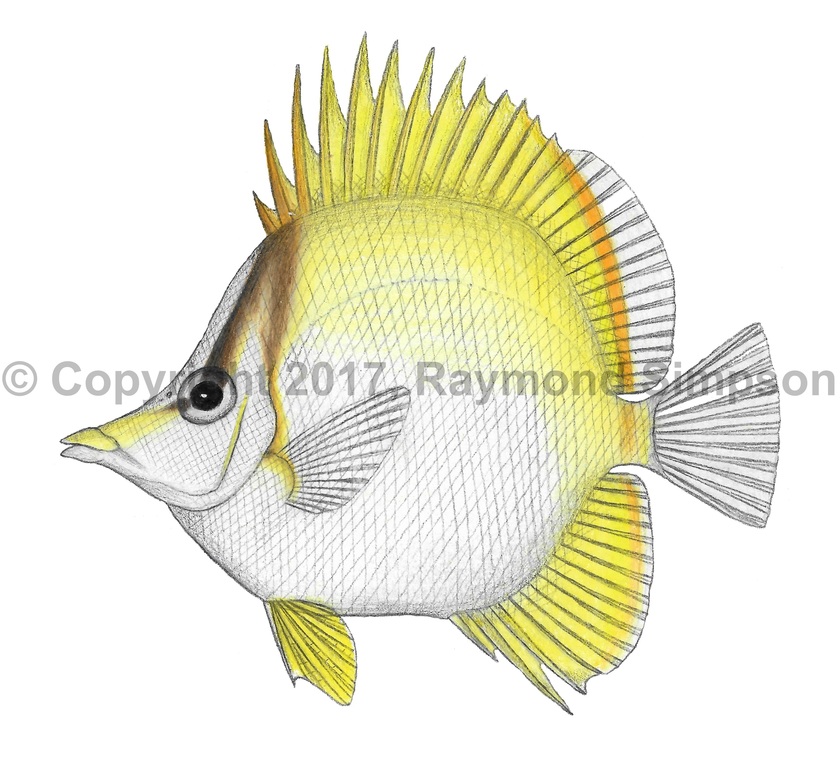
Common Name
Brazilian Butterflyfish
Year Described
Burgess, 2001
Identification
Dorsal Fin: XIII, 18-19
Anal Fin: III, 14-16
Pectoral Fin: 13-15
Lateral Line Scales: 22-28
Body oval and highly compressed. Body asymmetrical with a more rounded upper profile and a more flattened lower profile. Nape strongly concave. Snout long with a medium sized terminal mouth. Slender teeth in jaws in several rows. Preopercular edge lacks spines. Dorsal spines enlarged with deep notches in between spines. Soft dorsal and anal fin rounded. Third anal spine longest. Caudal fin evenly rounded to truncate. Pelvic fins thin and almost reach anus. Pectoral fin under angle of opercle. Lateral line arched in front but incomplete. Axillary scale present. Body, head, and most of median fins scaled.
Color
Body yellow to yellow-orange above, grading to white below. An inverted "V" marking on head formed from a brown eyeband running to nape and then returning down to the pectoral fin base as a thin orange band on the opercle. Dorsal, anal, and pelvic fins bright yellow. A thin orange band on the soft dorsal fin runs across caudal peduncle. Rear of soft dorsal and entire caudal fin clear.
Size
Maximum size to 10cm SL. Usually 8-9.5cm SL.
Habitat
Coral reefs but more common on deeper reefs (20-150m). Occurs shallower around islands (20-35m).
Range
Known only from southeastern Brazil, including Trindade Island.
References
Gasparini, J.L., & S.R. Floeter. 2001. The shore fishes of Trindade Island, western south Atlantic. Journal of Natural History, 35(11), 1639-1656.
Other Notes
Sister species to Prognathodes aculeatus. The two are separated by range and small color pattern differences.